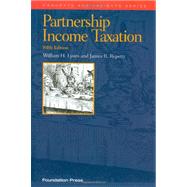- ISBN: 9781599413822 | 1599413825
- Cover: Paperback
- Copyright: 3/2/2011
The Fifth Edition attempts the simplest possible introduction to an intricate body of law. Any simplified description of the rules of partnership taxation would be so misleading as to be useless. We have therefore tried to make the subject accessible not by paraphrasing the rules, but by including numerous examples that are as straightforward as possible. We focus on simple partnerships holding few assets and engaging in routine transactions. The text places the rules in context by pointing out the purposes of the Internal Revenue Code provisions and regulations and presenting background information about practical matters such as how partnerships maintain capital accounts and how nonrecourse financing works. Using many examples, we show the operation of the rules in everyday cases encountered by practitioners. We do not offer this book as a comprehensive reference book and for that reason we have ignored many interesting and difficult issues. Some matters, such as the application of 736 to noncash distributions and tiered partnerships, are not discussed at all, and some problems, like mandatory basis adjustments under 732(d), receive only passing mention. Most of the points we deal with, however, we discuss at considerable length. Our goal is to give students background material and illustrations so that they can begin to understand and work with a statute that was drafted for (and by) experienced practitioners. Most chapters end with a section comparing the tax treatment of partners with that of the shareholders of S corporations. Many students encountering partnership taxation For The first time have already studied subchapter S. We expect that an examination of some of the basic differences between subchapters S and K should help those students understand both subjects.







